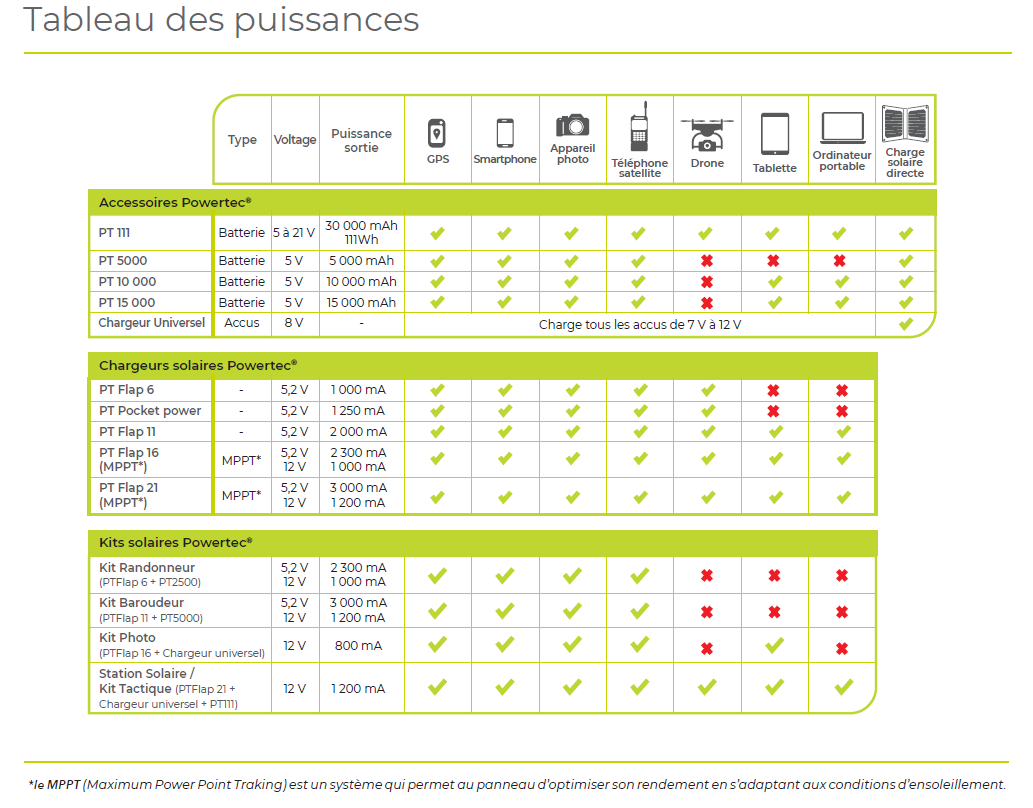Mini Cart
A number of factors when choosing a solar charger power bank
The external solar power bank is very practical when you’re on the move and don’t have access to an electrical socket to recharge your electronic devices such as your mobile phone, iPad, tablet or even your laptop.
What capacity external battery?
First of all, you need to check the capacity of the battery. This determines the amount of energy stored in the external battery and therefore how long it will be able to recharge your devices. Capacity is generally measured in milliampere hours (mAh); the higher the number, the greater the battery’s charging capacity. If you plan to charge several different devices or devices that require a lot of power, we recommend that you opt for a battery with a high capacity.
What type of external battery?
The most commonly used batteries are lithium-ion or lithium-polymer batteries, because they offer good energy storage capacity and are also lightweight and compact. Make sure you check whether the external battery you’re thinking of buying uses this type of battery. Another important feature to consider is the number of USB ports available on the external battery. The more ports, the more devices you’ll be able to charge simultaneously.
What type of connector for your solar charger power bank?
Some models use micro-USB while others use usb-c. It’s essential to consider the charging speed of the external battery. Some models offer fast charging, which means they can charge your devices faster than other batteries. This information is usually given in watts. Compatibility is another crucial point to consider. Make sure the external battery you’re considering is compatible with your electronic devices. Check whether it supports iOS devices such as iPhones and iPads or Android devices such as Samsung Galaxy phones. Some external battery models are compatible with a wide range of devices thanks to their versatile Lightning connector.
What about solar charging?
This is, of course, one of the most important features of an external solar power bank. When you’re on the move, it can be very useful to be able to recharge your battery using solar energy. Make sure you check whether the external battery has a built-in solar panel or an external panel: a system with a built-in solar panel will have a much shorter lifespan than an external panel, as the battery itself has a limited number of recharges.
Also check that the solar panel is waterproof and shockproof, which is important for outdoor use. It’s also worth checking whether the external solar power bank offers other recharging methods, such as USB or even induction charging, which can be very practical in certain situations. Finally, it’s a good idea to read user reviews before buying an external solar power bank. They can give you an idea of the quality and performance of the battery. A comparison of the different external solar power banks available on the market can also help you make the right choice.
To sum up, when choosing a solar charger power bank, you’ll need to consider battery capacity, the type of battery used, the number of USB ports, charging speed, compatibility with your electronic devices, solar charging, alternative charging methods, shock and water resistance, and user reviews. With these points in mind, you’ll be able to find the external battery that best meets your needs when it comes to charging your mobile devices.

